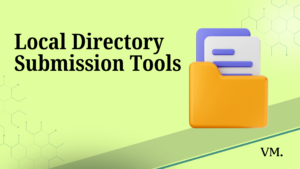In today’s digital landscape, local businesses face a challenge: standing out online. Many business owners overlook a powerful tool: local keyword research.
Effective local keyword research is a strategic process that can dramatically boost your visibility to potential customers in your area. Did you know that 80% of users use search engines to find local information?
That’s a huge opportunity. But here’s the catch: if you’re not showing up in those local searches, you’re essentially invisible to a large portion of potential customers. Let’s explore local keyword research and uncover how you can use it to drive more foot traffic, phone calls, and sales.
Understanding the Importance of Local Keyword Research
Before we get into how to do local keyword research, let’s talk about why it’s crucial for your business.
First, local keyword research helps you understand how people search for products or services like yours. It’s about knowing, not guessing. For instance, you might think people are searching for “best pizza restaurant,” but they might be using terms like “late-night pizza delivery” or “authentic Italian pizzeria near me.”
Knowing these nuances can make a world of difference in your SEO strategy. Second, local keyword research allows you to tailor your content to match local search intent. This means you’re not just attracting any traffic, but the right traffic: people who are actively looking for what you offer in your specific area.
Recent research shows that 21% of businesses struggle to attract sufficient website traffic. That’s a significant number of businesses missing out on potential customers. By using local keyword research, you’re giving yourself a competitive edge over your competition right off the bat.
The Basics of Local Keyword Research: 4 Steps
Now that we understand why local keyword research is important, let’s break down how to do it.
Step 1: Start with Your Core Services
Begin by listing all the services or products you offer. Be comprehensive. Sometimes we forget about services we consider minor, but they might be exactly what a potential customer is searching for.
Step 2: Add Location Modifiers
Think about all the ways people might refer to your location. This could include:
- City name.
- Neighborhood names.
- Nearby landmarks.
- “Near me”.
Step 3: Combine and Expand
Start combining your services with your location modifiers. For example, if you’re a dentist in Chicago, your list might include:
- Dentist in Chicago.
- Emergency dental care Loop Chicago.
- Teeth whitening near Millennium Park.
- Best dentist Near North Side.
Also think about how people might phrase their searches. They might use questions like “Where can I get a tooth filling in Chicago?” or phrases like “affordable dentist downtown Chicago.” This is where identifying seed keywords for your business can be very impactful.
Step 4: Use Keyword Research Tools
Now it’s time to validate and expand your list using keyword research tools. There are several options, including:
These SEO tools can help you discover search volumes, keyword difficulty, and even suggest related keywords you might have missed. They can also give you great insight into your keyword location in search results. Finding specific keywords and understanding search intent are crucial for a successful SEO strategy.
Advanced Local Keyword Research Techniques
Once you’ve got the basics down, it’s time to level up your local keyword research.
Understanding Implicit vs. Explicit Local Intent
Local keywords can be divided into two categories: those with explicit local intent and those with implicit local intent. Explicit local intent keywords include a location, like “dentist in Chicago.” Implicit local intent keywords don’t include a location but are typically searched with local intent, like “emergency dentist open now.”
Understanding this distinction is crucial because Google treats these searches differently. As Will Critchlow and Tom Anthony explain in this video, Google uses various signals to determine when a search has local intent, even if it doesn’t explicitly mention a location. Google Business Profiles are a key ranking factor in this case.
Leveraging Google’s “People Also Ask” Feature
When you perform a search on Google, you’ll often see a “People Also Ask” box. This feature is great for local keyword research. It shows you related questions that people are asking, giving you insight into the language and concerns of your potential customers.
For example, if you search for “dentist in Chicago,” you might see questions like:
- How much does a dental cleaning cost in Chicago?
- What is the best-rated dentist in Chicago?
- How do I choose a good dentist in Chicago?
Each of these questions represents a potential keyword or topic for your website content. Focusing on these relevant keywords is key to a solid SEO strategy.
Using Voice Search Optimization
76% of people use voice search to find local businesses at least weekly. This means optimizing for voice search is essential.
Voice searches tend to be more conversational and often take the form of questions. For example, instead of typing “best dentist Chicago,” someone might ask their phone, “Who’s the best dentist near me?”
To optimize for voice search:
- Focus on long-tail keywords that mimic natural speech patterns.
- Create content that directly answers common questions.
- Ensure your Google Business Profile is fully optimized.
Putting Your Local Keyword Research into Action
Here’s how to use your local keywords to boost your visibility and attract more customers.
Optimizing Your Website
Start by incorporating your local keywords into key areas of your website:
- Page titles and headers.
- Meta descriptions.
- URL structures.
- Throughout your content (naturally, not forced).
Remember, the goal is to make your content sound natural, not stuffed with keywords. Case studies, blog posts, and FAQs are all great places to incorporate relevant keywords.
Creating Location-Specific Landing Pages
If you serve multiple locations, consider creating specific landing pages for each area. This allows you to target location-specific keywords more effectively. For example, a falafel restaurant chain might create a page specifically for falafel catering in the Boston area.
This page can then be optimized for local keywords like “falafel catering Boston” or “Middle Eastern catering Near North End.” You can get an idea of the average number of searches for a specific term using a keyword database like Semrush or Ahrefs.
Optimizing Your Google Business Profile
Your Google Business Profile is crucial for local SEO. Make sure it’s fully optimized with:
- Accurate business information (name, address, phone number).
- Detailed business description using your local keywords.
- High-quality photos of your business.
- Regular posts about promotions or events.
Businesses with photos on their listings receive 42% more requests for driving directions and 35% more clicks to their websites. That’s a significant boost from adding some photos.
Leveraging Local Content Marketing
Create content that’s specifically relevant to your local audience. This could include:
- Blog posts about local events or news.
- Guides to local attractions near your business.
- Case studies featuring local clients.
- FAQs addressing common concerns of local customers.
This type of content not only helps with local SEO but also positions you as a local authority, building trust with potential customers.
Tracking and Refining Your Local SEO Strategy
Local keyword research is an ongoing process that requires regular monitoring and refinement.
Use tools like Google Analytics and Google Search Console to track how well your pages are performing for your target keywords. Keep an eye on metrics like:
- Organic traffic.
- Click-through rates.
- Bounce rates.
- Conversion rates.
If you’re not seeing the results you want, don’t be afraid to go back to the drawing board. Local search trends can change, and what worked last year might not be as effective this year.
Google Search Console, for instance, doesn’t reflect all data. Always combine tool insights with your own local knowledge and customer feedback for the best results. Media advertising can be a great way to drive targeted traffic to your site.
My Summary
Local keyword research is not just nice to have for local businesses; it’s a must. In a world where 80% of consumers go online multiple times a week to find local businesses, can you afford to not be visible?
By understanding how your potential customers are searching, tailoring your content to match their intent, and consistently refining your strategy, you’re setting yourself up for local SEO success. Remember, the goal is to attract the right traffic: people who are in your area and looking for what you offer.
Don’t let local keyword research intimidate you. Embrace it as the powerful tool it is. Your future customers are out there, searching for you right now. With effective local keyword research, you’re making sure they can find you.
FAQs
How do I find local search keywords?
To find local search keywords, start by listing your core services and location modifiers. Then use keyword research tools like Semrush’s Keyword Magic Tool to expand your list and check search volumes. Don’t forget to consider implicit local intent keywords and voice search phrases.
What is an example of a local keyword?
An example of a local keyword would be “pizza delivery in Brooklyn” or “emergency plumber near me”. Local keywords typically combine a service or product with a location modifier, whether that’s a city name, neighborhood, or phrases like “near me.
How to do local SEO keyword research?
Local SEO research involves understanding your target audience, researching local keywords, analyzing competitors, and studying local search trends. Use tools like Google Keyword Planner for local volumes, check Google’s “People Also Ask” feature for related queries, and don’t forget to optimize for voice search, which is increasingly important for local SEO.
What are localized keywords?
Localized keywords are search terms that include a geographical component. They can be explicit (e.g., “dentist in Chicago”) or implicit (e.g., “24-hour pharmacy” when searched from a specific location). These keywords help businesses target customers in their specific service area.
Share:




